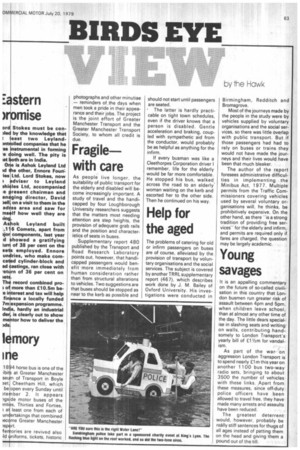Fragile with care
Page 65

If you've noticed an error in this article please click here to report it so we can fix it.
As people live longer, the suitability of public transport for the elderly and disabled will become increasingly important. A study of travel and the handicapped by four Loughborough University researchers suggests that the matters most needing attention are step heights, the provision of adequate grab rails and the position and characteristics of seats in buses.
Supplementary report 480 published by the Transport and Road Research Laboratory points out, however, that handicapped passengers would benefit more immediately from human consideration rather than from structural alterations to vehicles. Two suggestions are that buses should be stopped as near to the kerb as possible and should not start until passengers are seated.
The latter is hardly practicable on tight town schedules, even if the driver knows that a person is disabled. Gentle acceleration and braking, coupled with sympathetic aid from the conductor, would probably be as helpful as anything for the infirm.
If every busman was like a Cleethorpes Corporation driver I remember, life for the elderly would be far more comfortable. He stopped his bus, walked across the road to an elderly' woman waiting on the kerb and escorted her to the other side. Then he continued on his way.




















































































































